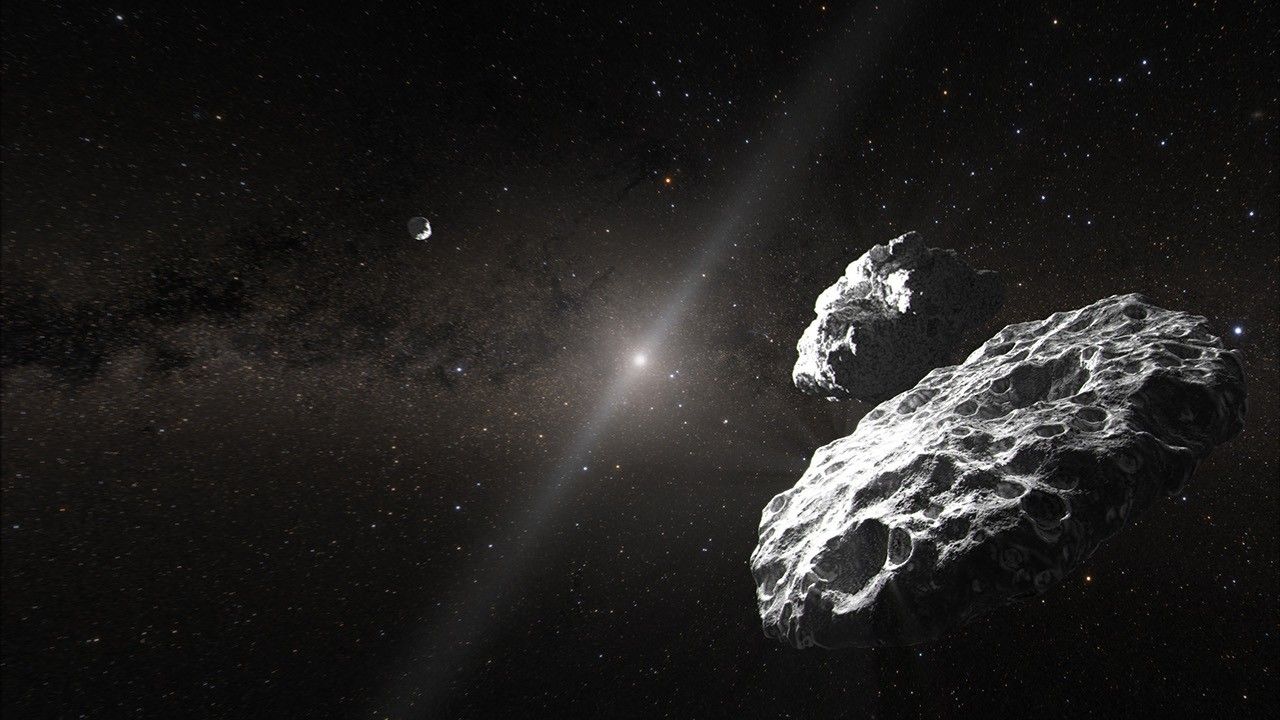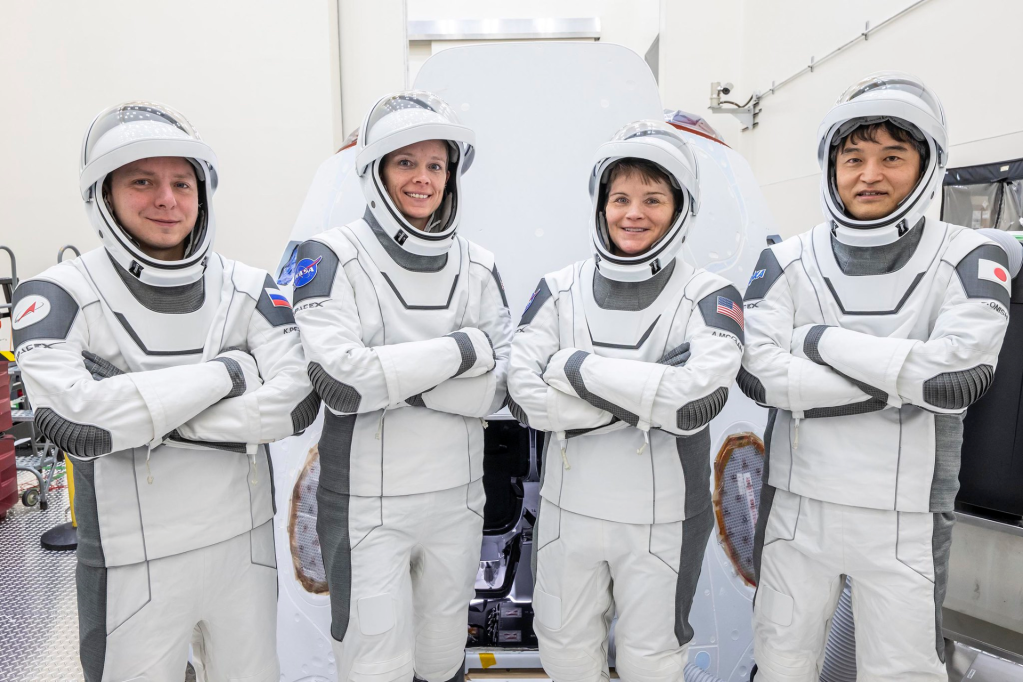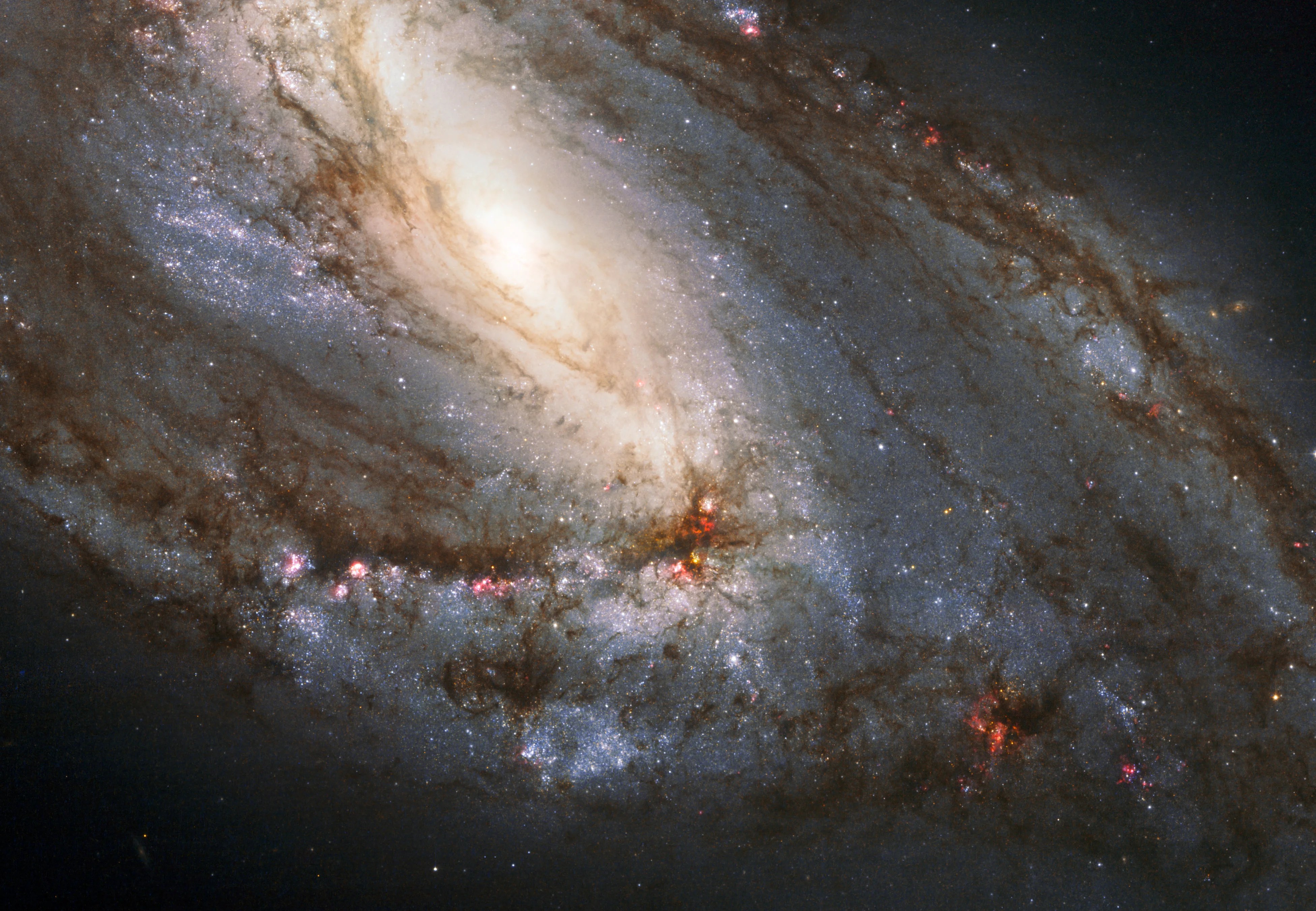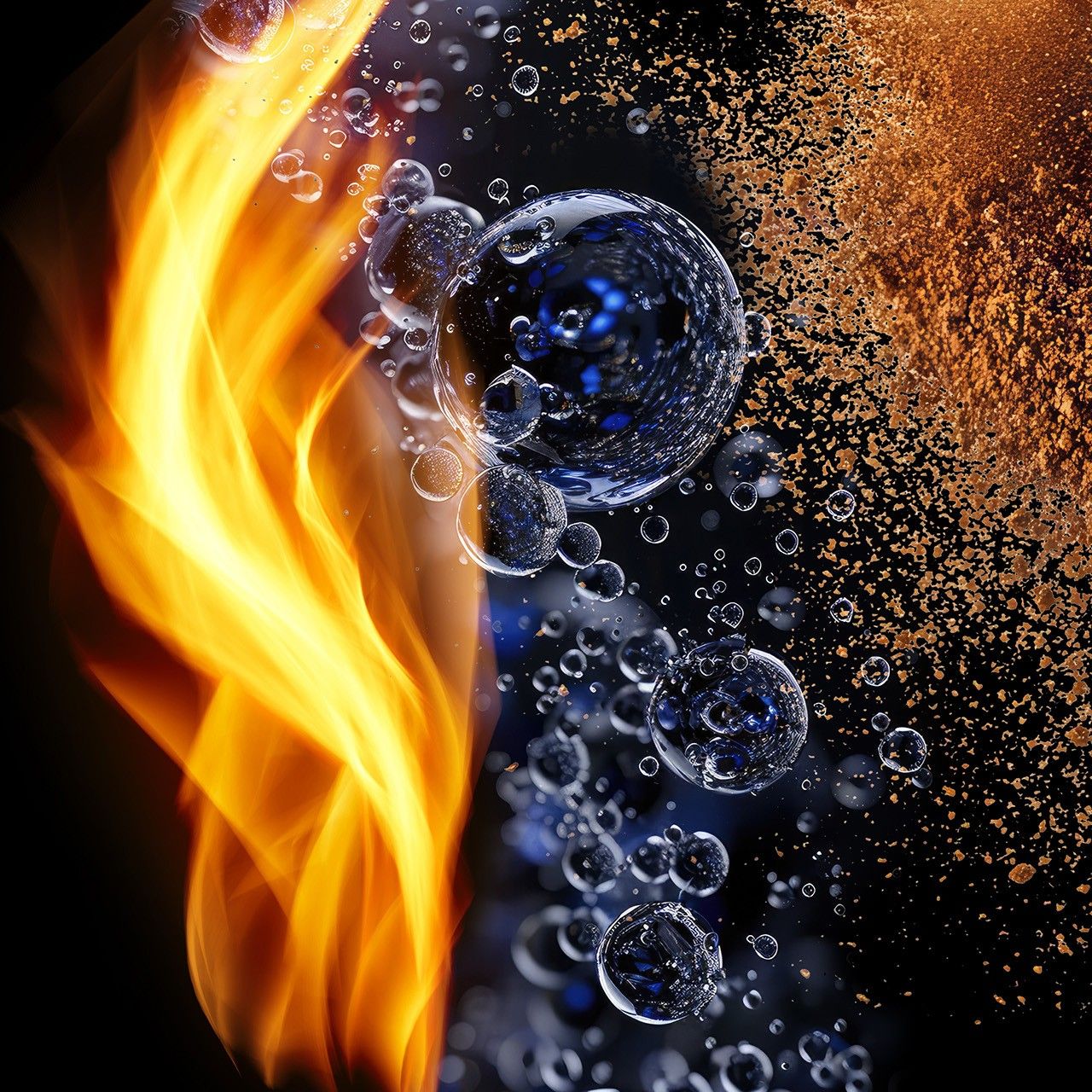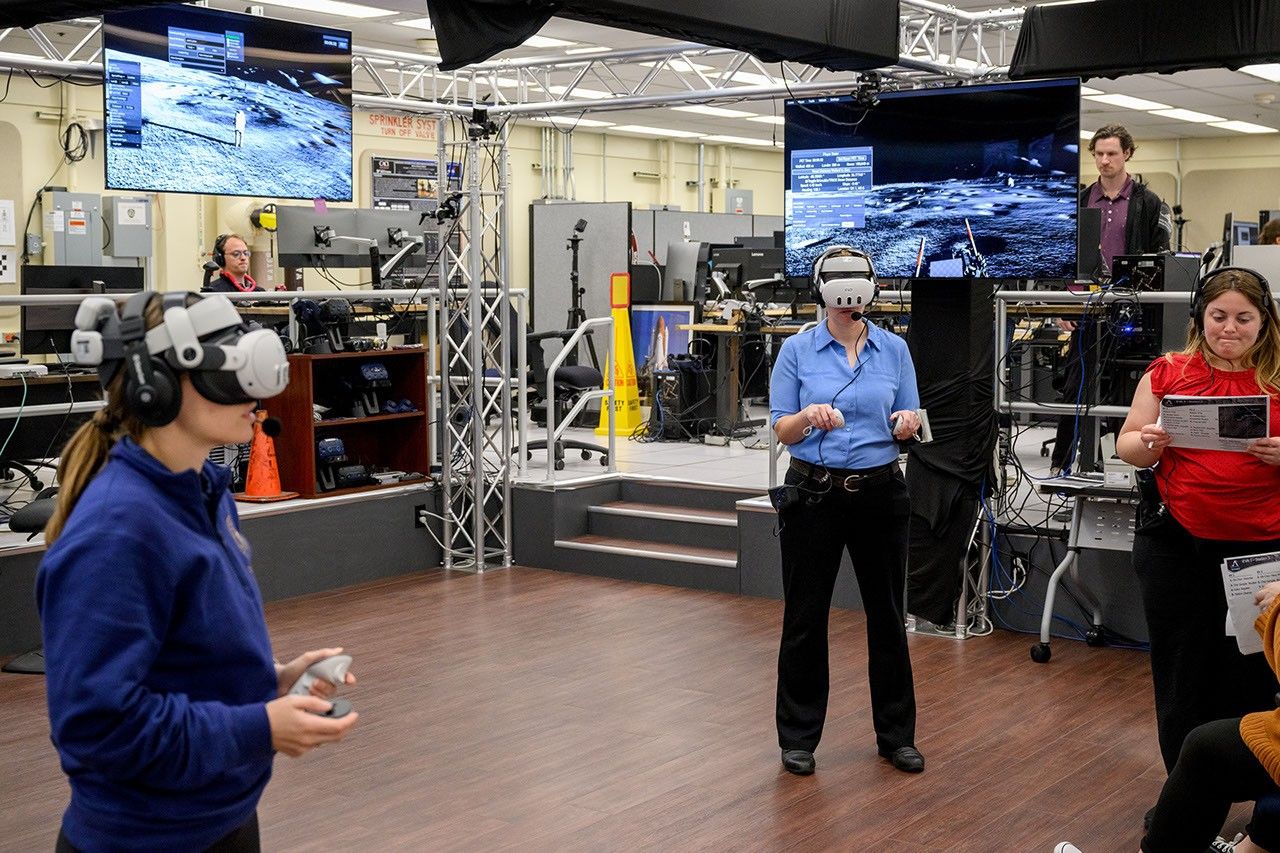In October 1970, as workers at NASA’s Kennedy Space Center (KSC) prepared to roll the Apollo 14 Saturn V to Launch Pad 39A, the Apollo 14 crew continued preparing for their upcoming mission to explore the Fra Mauro highlands region of the Moon. Commander Alan B. Shepard, Command Module Pilot (CMP) Stuart A. Roosa, and Lunar Module Pilot (LMP) Edgar D. Mitchell, as well as their backups Eugene A. Cernan, Ronald E. Evans, and Joe H. Engle, trained for the mission to attempt the third lunar landing, with the launch planned for Jan. 31, 1971. The Apollo 15 crew began to train in earnest for their more ambitious mission to explore the Hadley-Apennine region, including using the first Lunar Roving Vehicle and an expanded suite of instruments to observe the Moon from orbit.
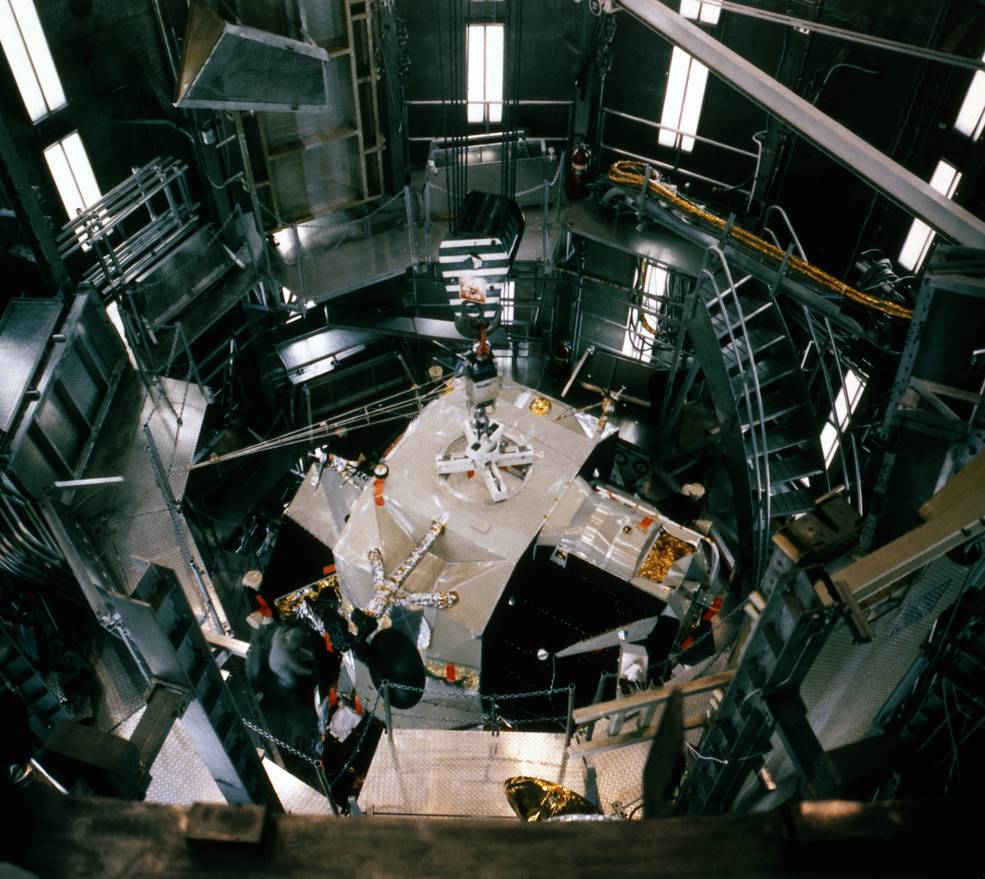
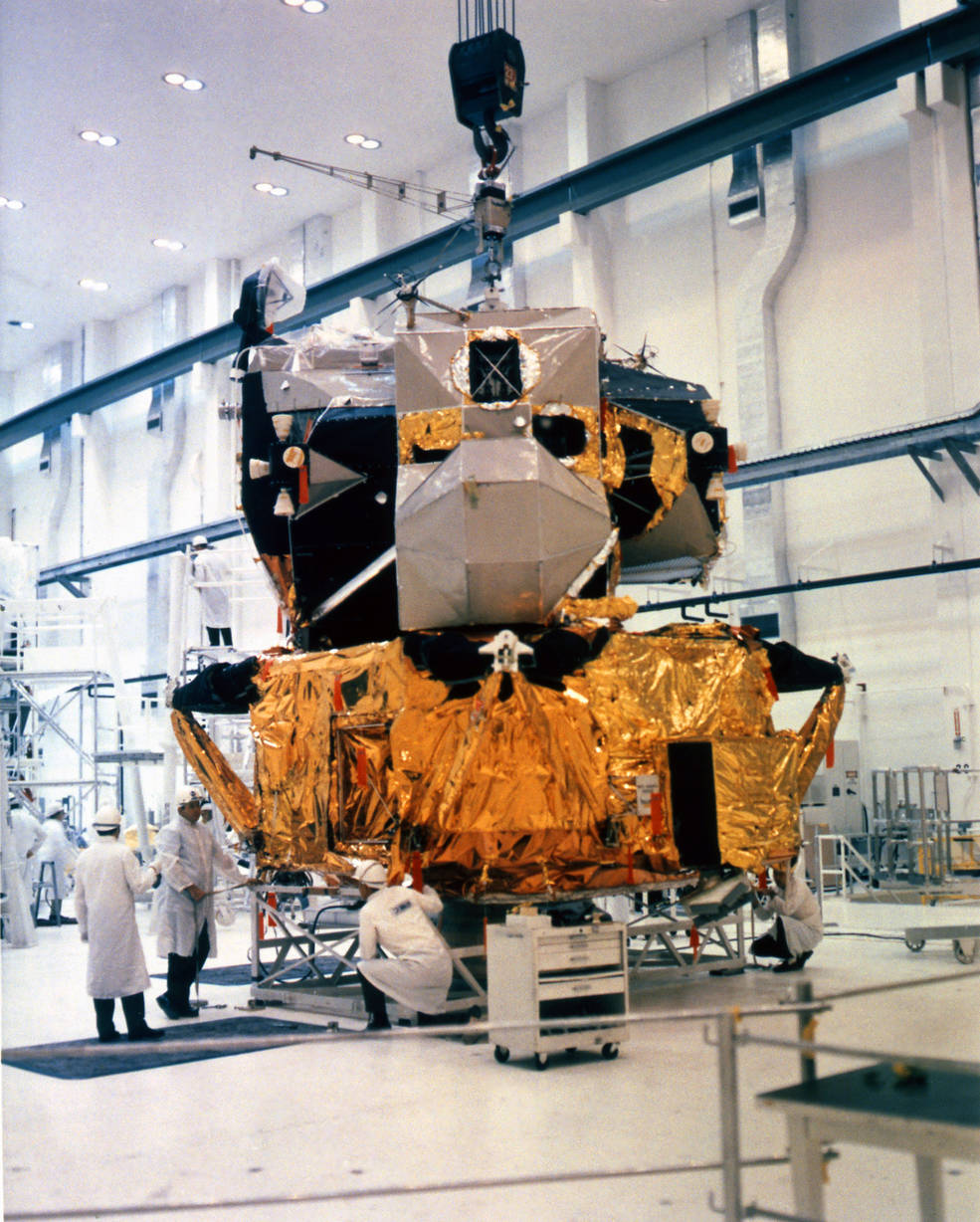
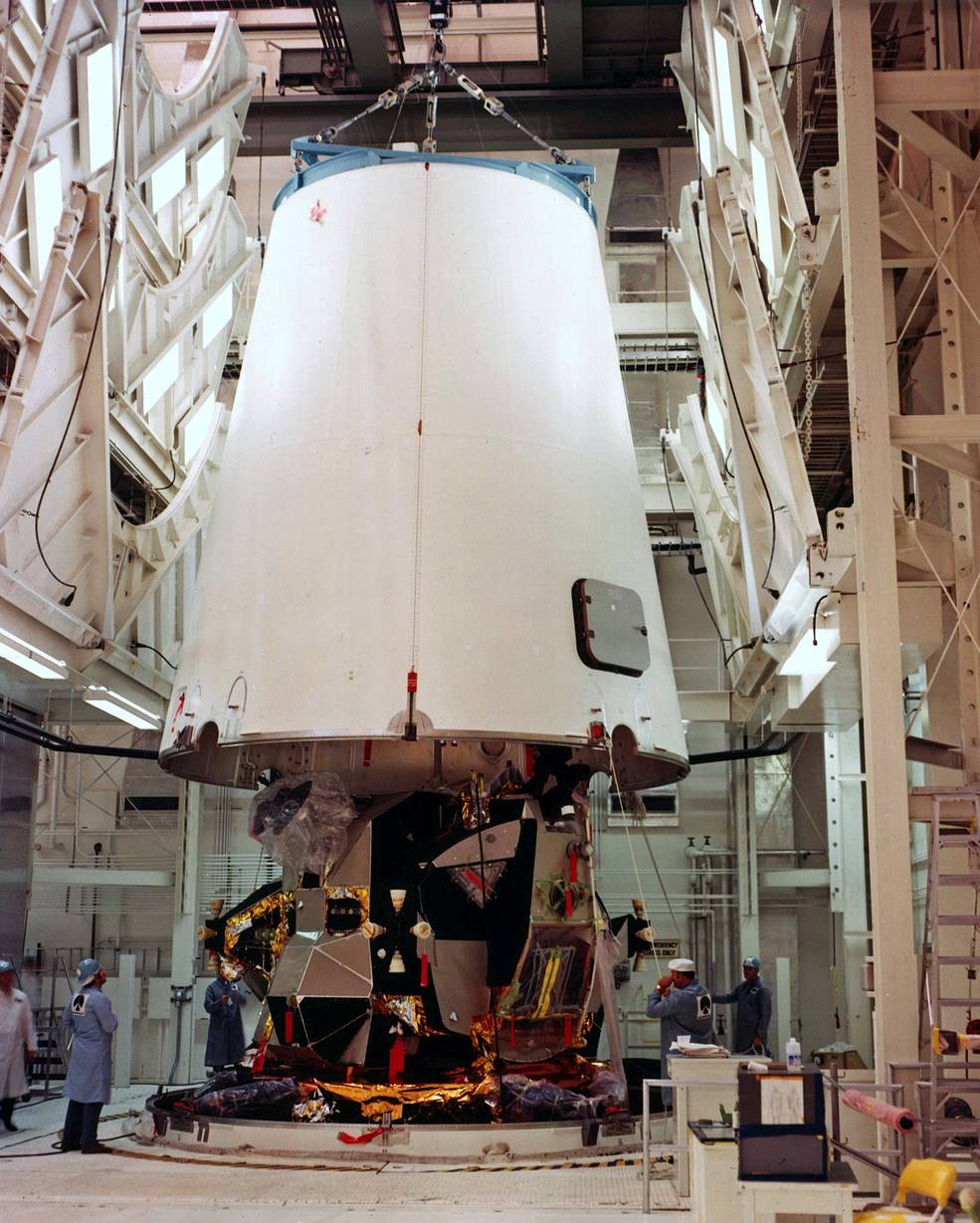
Left: Apollo 14’s Lunar Module (LM) in a vacuum chamber at NASA’s Kennedy Space Center. Middle: Workers prepare to install the landing gear on the Apollo 14 LM. Right: Workers install the Apollo 14 LM in its Spacecraft Lunar Module Adapter.
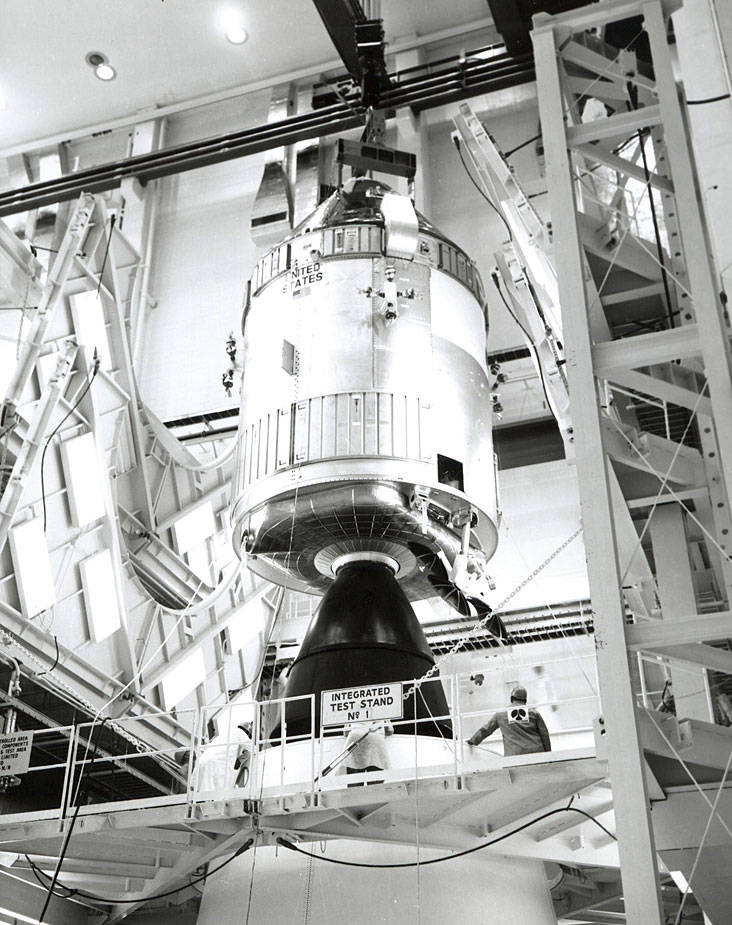
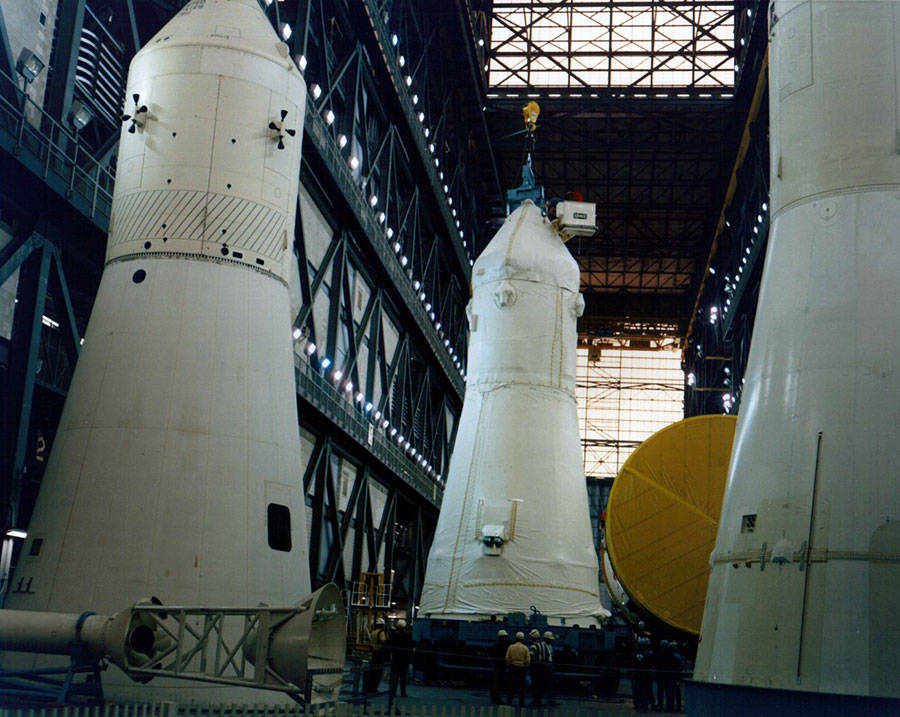
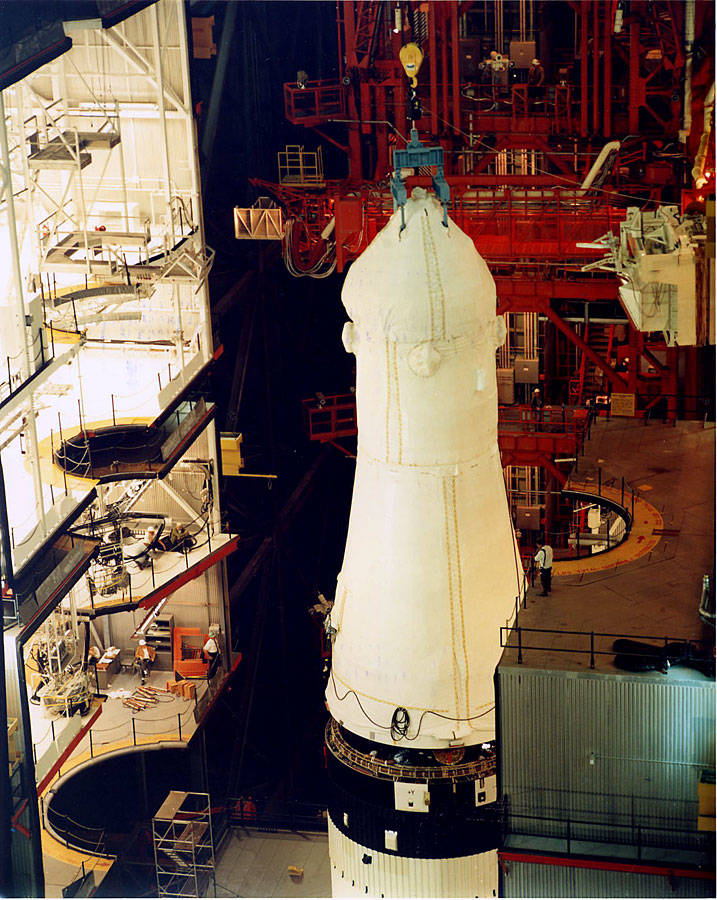
Left: Engineers lower the Apollo 14 Command and Service Module onto the Spacecraft Lunar Module Adapter. Middle: The assembled Apollo 14 spacecraft, center, in the transfer aisle of the Vehicle Assembly Building, with the Launch Escape Tower visible at lower left. Right: Workers lowering the Apollo 14 spacecraft onto its Saturn V rocket.
In KSC’s Manned Spacecraft Operations Building (MSOB), workers removed the Apollo 14 Lunar Module (LM) from the vacuum chamber where engineers and the Apollo 14 crew had successfully tested its pressure integrity. After transfer to a work stand, workers installed the landing gear and with the prime and backup crew members completed the crew compartment fit and functional tests. In late October 1970, workers installed the LM in its Spacecraft Lunar Module Adapter (SLA). In another test stand in the MSOB, workers completed modifications to the Command and Service Modules (CSM) resulting from the Apollo 13 accident, including adding a third oxygen tank. On Nov. 2, they transferred the CSM out of the test stand and lowered it onto the SLA and two days later transferred the assembled spacecraft to the Vehicle Assembly Building (VAB). Engineers lifted the spacecraft by crane and stacked it on top of its Saturn V rocket in the VAB’s High Bay 3 to prepare for rollout to the launch pad on Nov. 9.
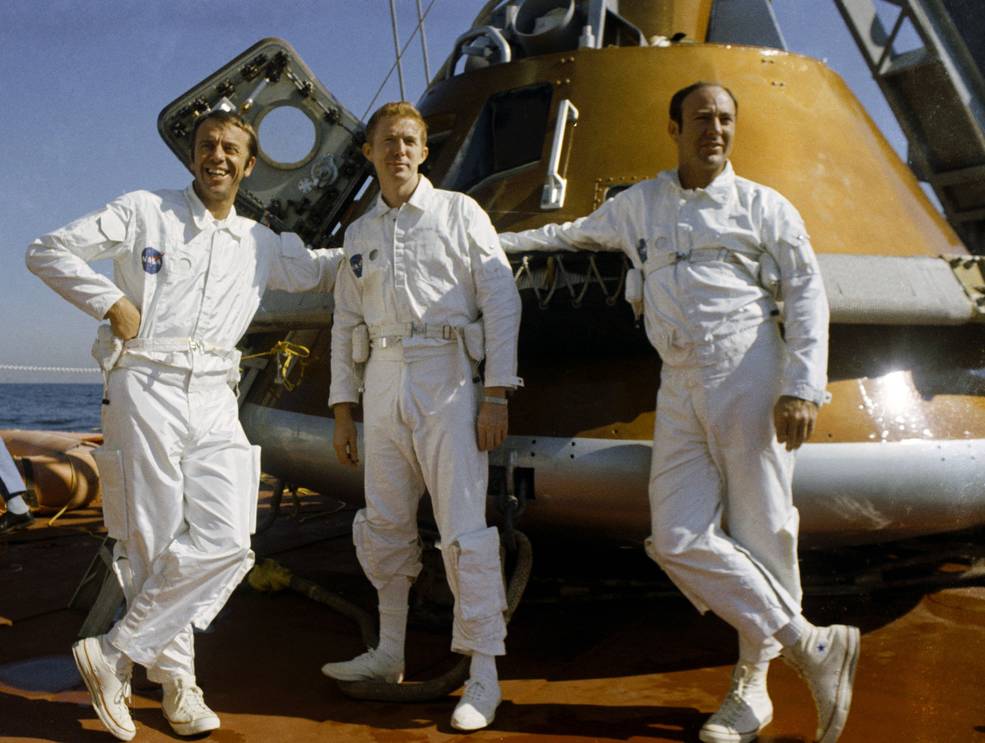
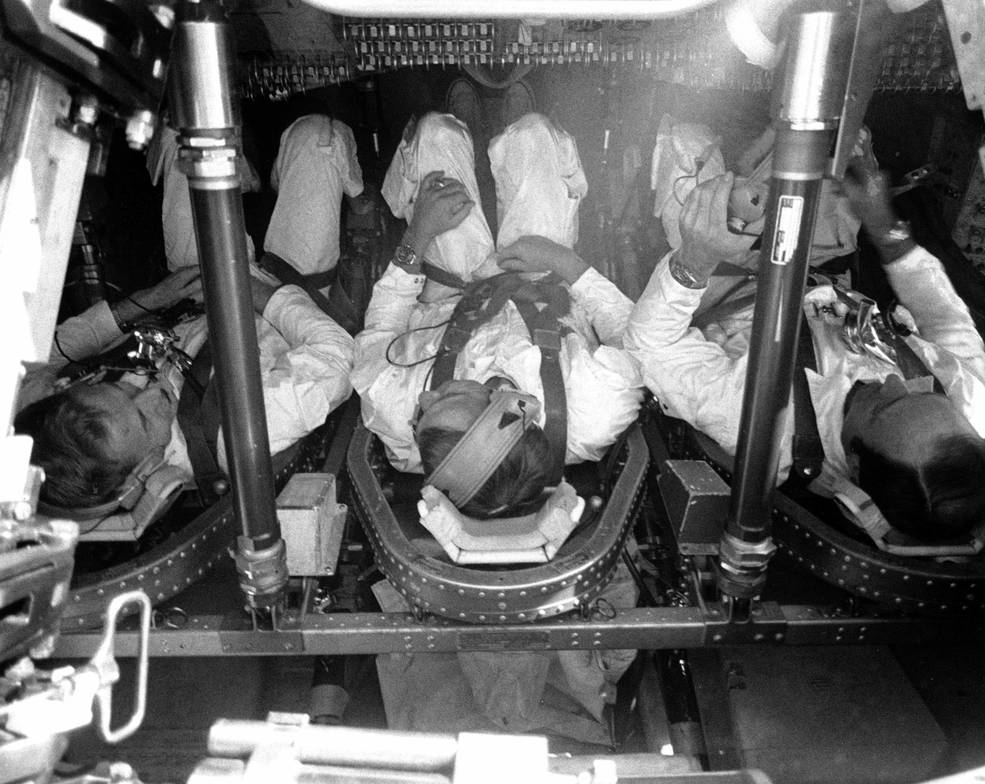
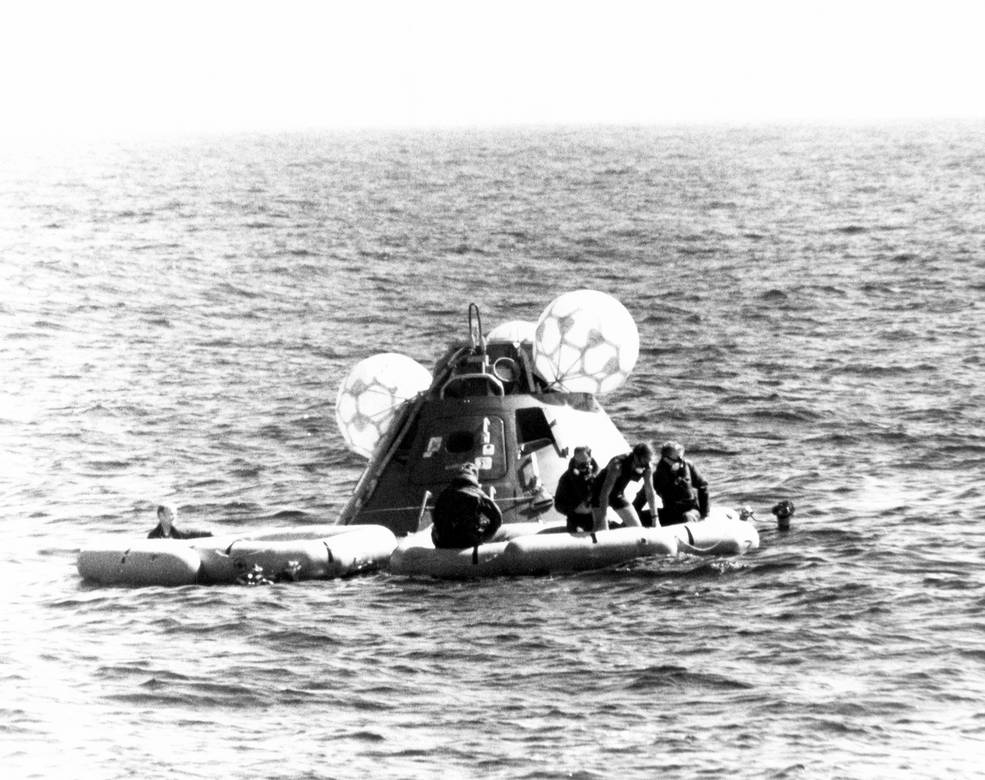
Left: Apollo 14 astronauts Alan B. Shepard, left, Stuart A. Roosa, and Edgar D. Mitchell in front of an Apollo training capsule aboard NASA’s Motor Vessel Retriever ready to begin their water egress training in the Gulf of Mexico. Middle: Roosa, Shepard, and Mitchell inside the Apollo training capsule for the water egress training. Right: After egressing from the capsule, assisted by recovery swimmers, Mitchell, Shepard, and Roosa rest in the life raft.
As part of training for splashdown, on Oct. 24, the Apollo 14 prime crew of Shepard, Roosa, and Mitchell completed the water egress exercise aboard the NASA Motor Vessel Retriever in the Gulf of Mexico off the coast of Galveston, Texas. The astronauts climbed aboard a training version of an Apollo Command Module that sailors from the Retriever lowered into the water in the apex down position. Three self-inflating balloons righted the spacecraft. Shepard, Roosa, and Mitchell climbed out of the spacecraft onto life rafts, assisted by recovery swimmers. The astronauts wore respirators, part of the back-contamination protocols, to prevent exposure of Earth to any possible lunar pathogens. A week later, the backup crew of Cernan, Evans, and Engle completed their water egress training..
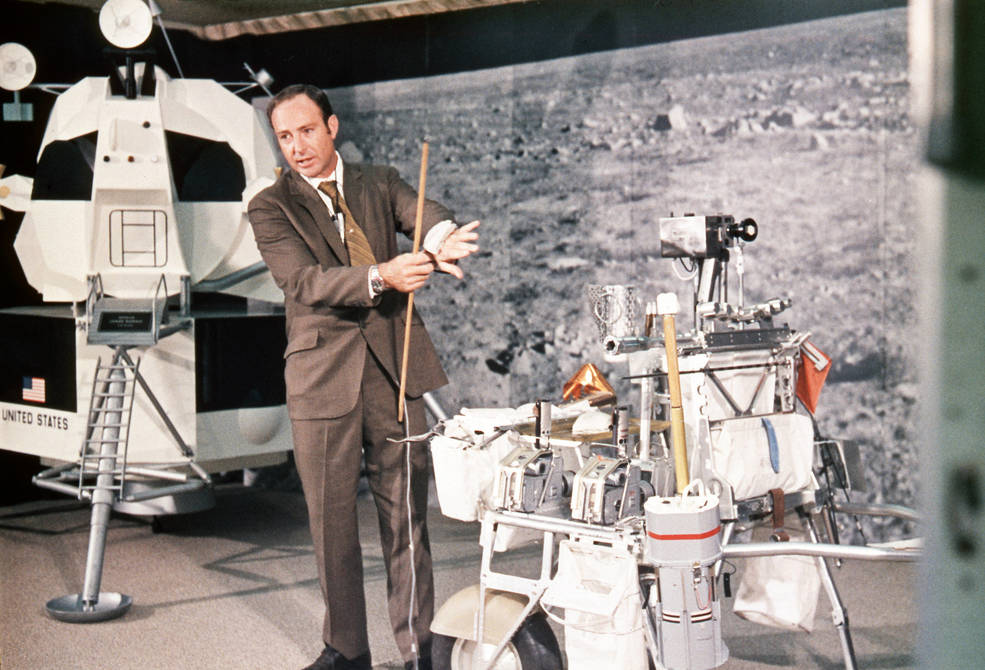
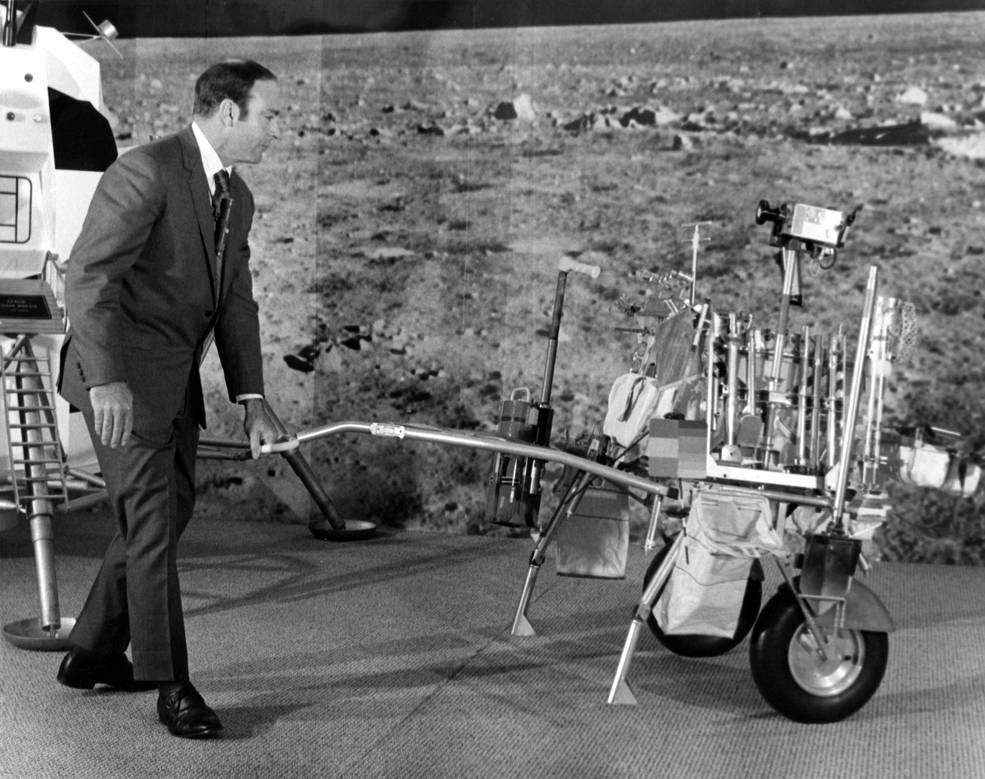
Left: Apollo 14 Lunar Module Pilot Edgar D. Mitchell describes the equipment that the Modular Equipment Transporter (MET) will carry during the Apollo 14 spacewalk. Right: Mitchell demonstrates the ease of pulling the MET, even with a gloved hand.
One of the improvements for the Apollo 14 mission involved the Modular Equipment Transporter (MET), a two-wheeled golf cart-like conveyance to assist the moonwalking astronauts to carry their tools. On Oct. 16, during a press conference at NASA Headquarters in Washington, D.C., Mitchell provided a demonstration of the 20-pound MET’s uses and the 70 pounds of equipment that it carried during the astronauts’ second EVA on the lunar surface. These included six core tubes, a trenching tool, two geology scoops, four rock bags, a portable magnetometer to measure the Moon’s magnetic field, and five cameras. On Oct. 28, Shepard and Mitchell practiced using the MET in simulated one-sixth gravity during parabolic flights aboard NASA’s KC-135 aircraft.
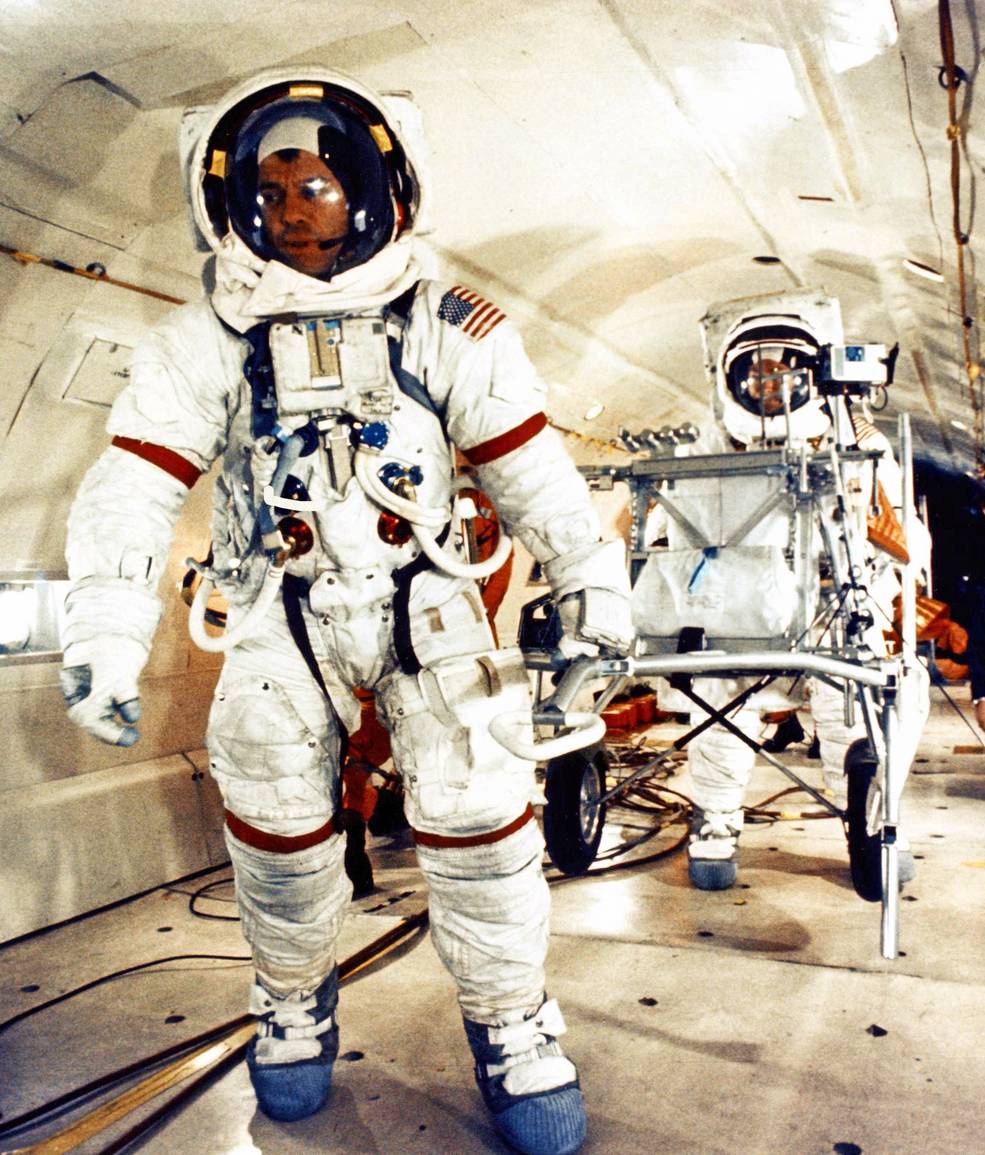
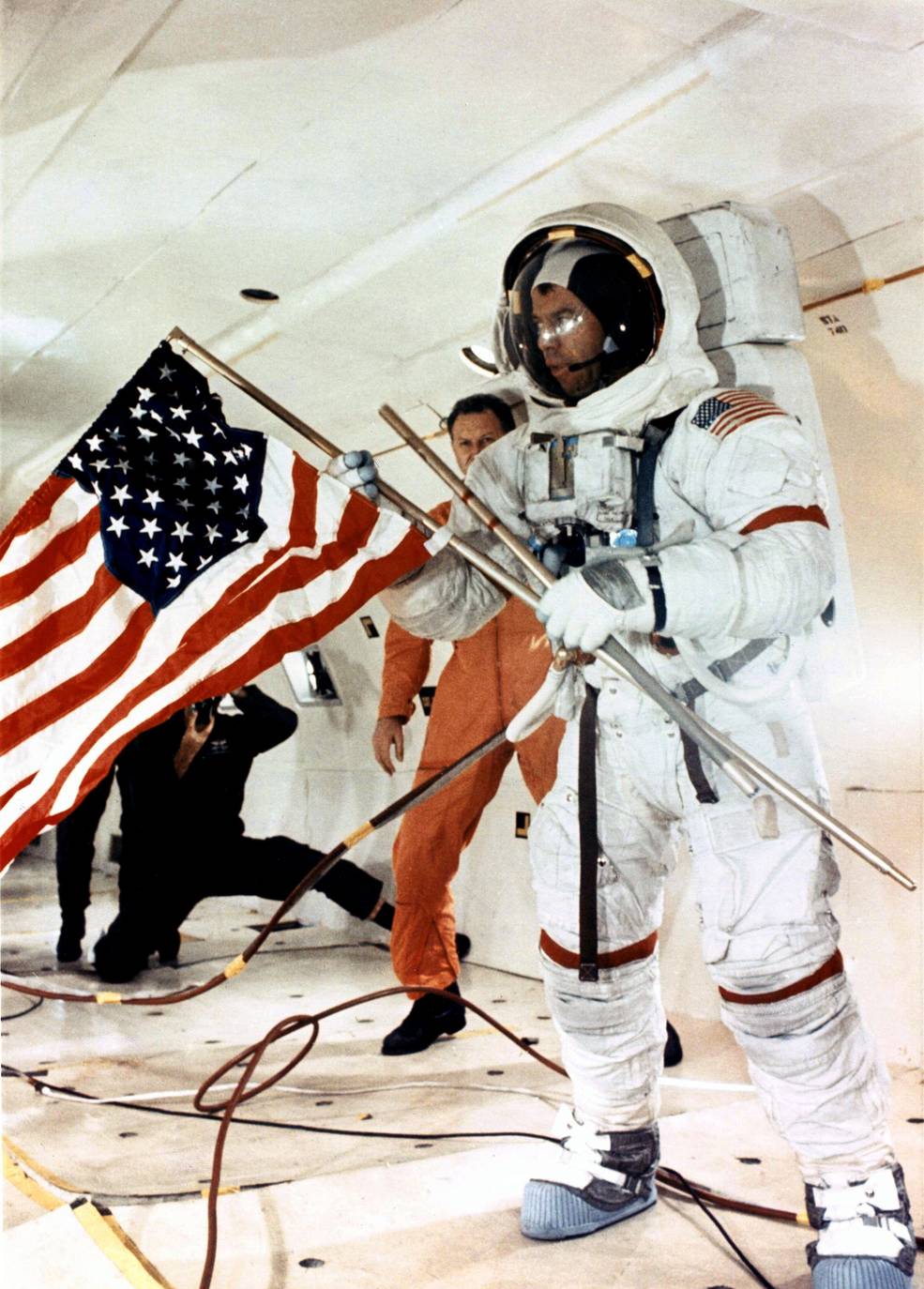
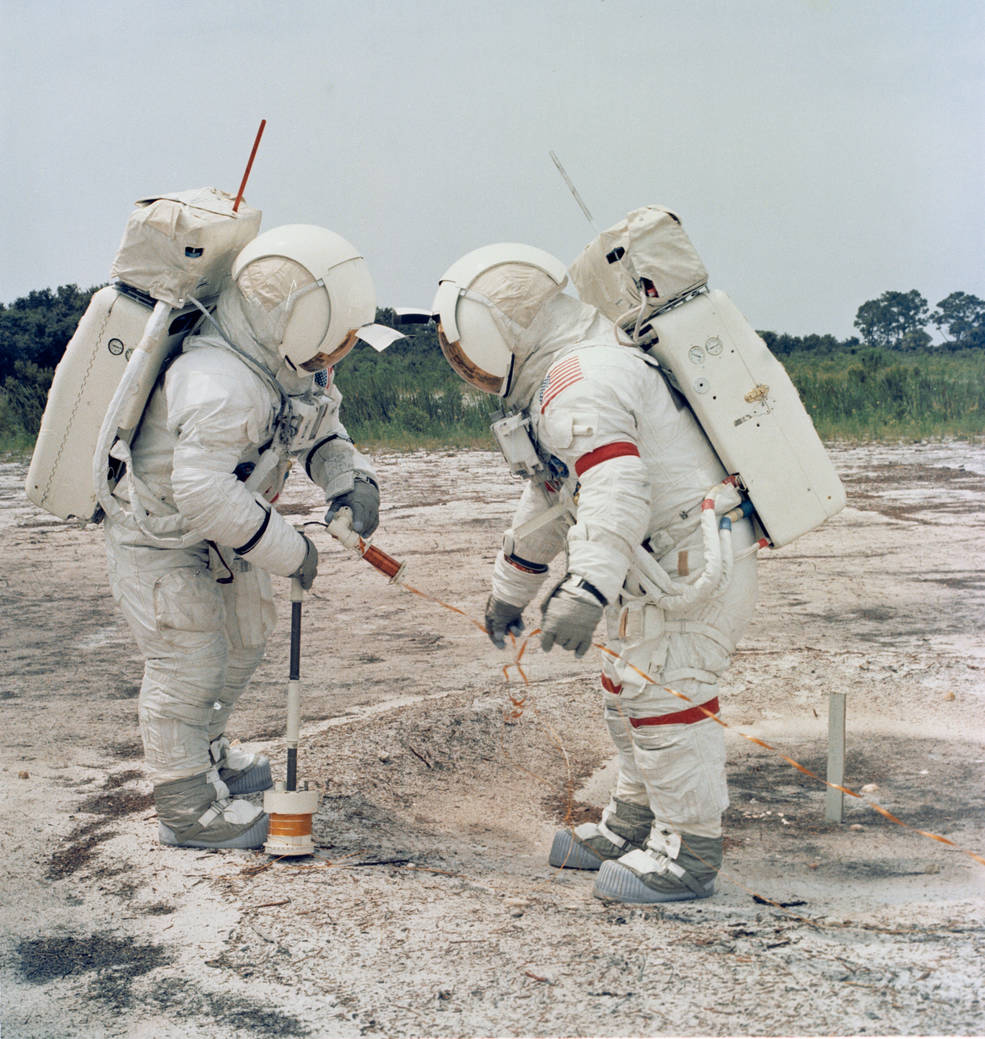
Left: Apollo 14 astronauts Edgar D. Mitchell, left, and Alan B. Shepard practice using the Modular Equipment Transporter during one-sixth gravity simulations aboard NASA’s KC-135 aircraft. Middle: Shepard practices planting the American flag during one-sixth gravity training. Right: Mitchell and Shepard practice using the “thumper” during extravehicular activity training at NASA’s Kennedy Space Center.
Mission planners added the Active Seismic Experiment to Apollo 14 so scientists can better understand the shape, structure, and thickness of the Moon’s outer crust. In one part of the experiment, Mitchell used a “thumper” device to send small shockwaves into the lunar surface and three geophones planted into the lunar soil recorded the resulting vibrations. In the second part of the experiment, conducted once the astronauts had left the Moon’s surface, Mitchell set up a four-barrel mortar to lob grenades to varying distances from the geophones. The resulting vibrations helped scientists understand the Moon’s interior structure.
Apollo 15
Beginning with Apollo 15, science became the primary emphasis of the Moon landing missions. This included the addition of the Lunar Roving Vehicle (LRV) to enable the astronauts to traverse longer distances on the surface and the Scientific Instrument Module (SIM) bay to the Service Module equipped with eight instruments to vastly expand observations from lunar orbit. Some of the SIM bay instruments used photographic film that a spacewalking astronaut needed to retrieve during the journey back from the Moon to the Earth, the first deep space extravehicular activity. Engineers upgraded the LM to increase its stay time on the Moon to three days, allowing three surface excursions, and increasing the science experiments’ mass to 1,200 pounds, six times what Apollo 11 carried and even three times the science payload mass on Apollo 14. The ambitious Hadley-Apennine landing zone, the first Apollo site away from the Moon’s equator, featured the 8,000-foot high Apennine Mountains and the Hadley Rille, a 60-mile long, half-a-mile wide and 600-foot deep sinuous canyon.
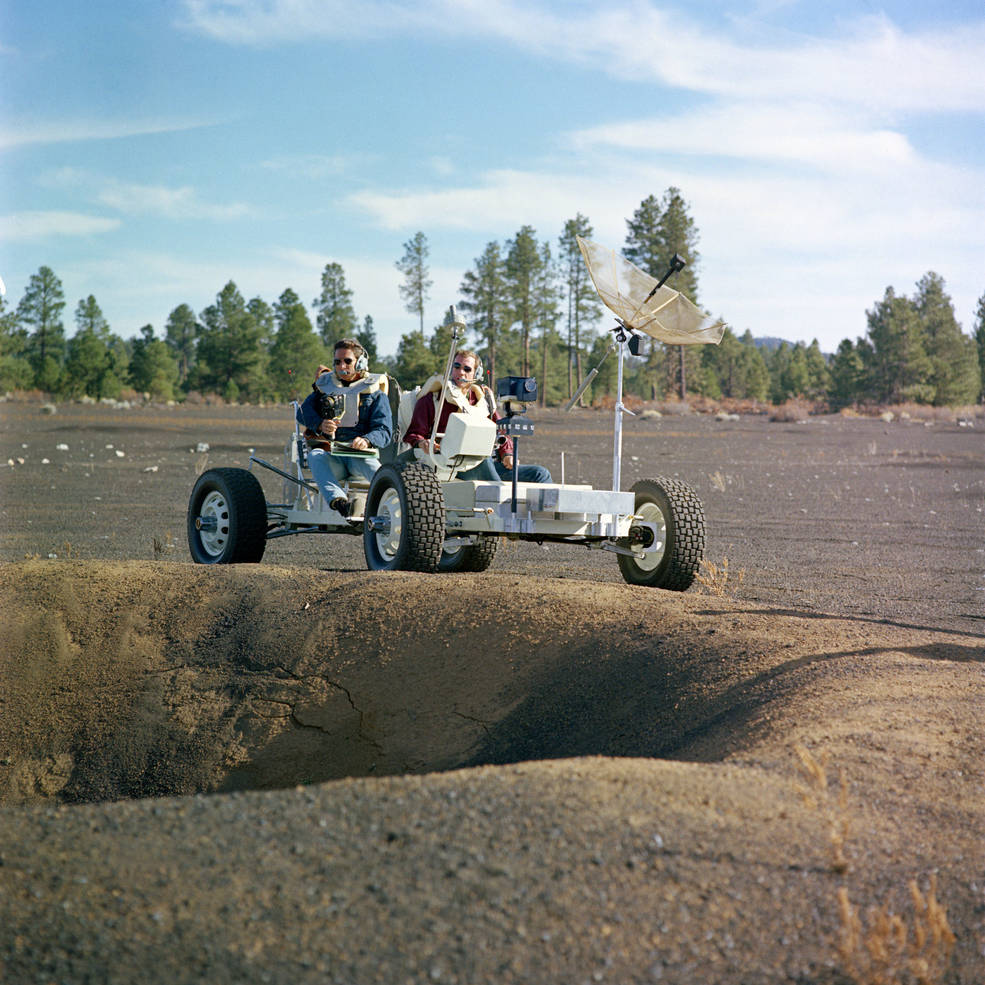
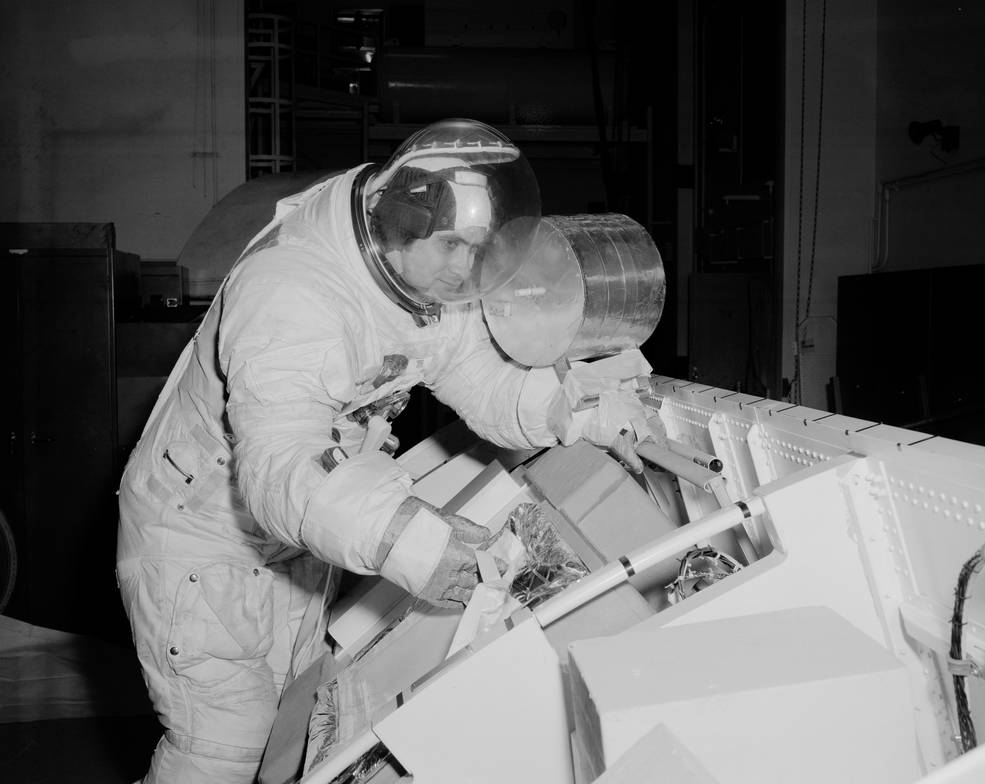
Left: Apollo 15 astronauts James B. Irwin, left, and David R. Scott driving the Geology Rover, or Grover, at the Cinder Cones area in Arizona as part of their lunar excursion training. Right: A NASA engineer
(wearing astronaut Charles “Pete” Conrad’s training spacesuit) practices techniques required to retrieve film canisters from the Scientific Instrument Module bay of the Service Module.
The training for the Apollo 15 crew of Commander David R. Scott, CMP Alfred M. Worden, and LMP James B. Irwin and their backups Richard F. Gordon, Vance D. Brand,and Harrison H. “Jack” Schmitt, focused on the new aspects of their mission. Geology training sessions, such as the trip by Scott, Irwin, Gordon, and Schmitt to northern Minnesota between Oct. 7-9, emphasized recognizing features at the Hadley-Apennine site by studying exposed layers in an open-pit mine. A trip to study artificial craters at Cinder Lakes near Flagstaff, Arizona, made use of the Geologic Rover, better known as Grover, for the first time. The astronauts used Grover, built by the United States Geologic Service, as a stand-in for the formal LRV training unit that was not yet available. Worden and Brand trained extensively in using the SIM-bay instruments and rehearsed the film retrieval spacewalk in the Water Immersion Facility at NASA’s Manned Spacecraft Center, now NASA’s Johnson Space Center in Houston.
To be continued…


